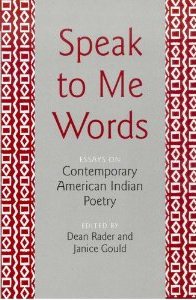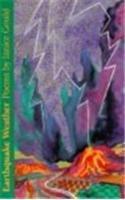Creativity Salon: An Interview With Dr. Janice Gould
I’ll begin the post by saying: Welcome to my Bookjoy Creativity Salon, Janice, and congratulations on recently receiving tenure at the University of Colorado, Colorado Springs. You are a new friend with whom I’ve so enjoyed spending time recently.
 |
| Photo by credit Jason Ordaz, School for Advanced Research, Santa Fe, NM |
1. You’re a poet, scholar, teacher, musician, photographer, a woman creative in so many ways. When and how did your awareness of your creativity begin?
JG: My mother encouraged my sisters and me to be creative when we were just little. She gave us lots of room to explore our world and to play. We made up stories and acted them out: we were pioneers, cowboys, Indians, detectives, railroad engineers, wanderers and explorers. I liked to draw and color; my mom was always enthusiastic about my work. She taught us music—we had a piano—and we were always singing. In first grade, I wrote a poem about the rain, and doing this I realized all in a flash how I felt about rain, how I perceived it.
Writing that little poem provided me with an opportunity to gain insight into how I connect with the natural world. I had found a new way to see things and it felt exciting and marvelous.
2. Thinking back to yourself in third grade, are you surprised at what you are doing now, at the woman you have become?
JG: When I was in third grade, I had a teacher who segregated our class, putting all the “dark” children together, and treating us one way, and placing all the white children together and treating them another way—giving them certain privileges, and treating us “dark” children as if we were too “dumb” to protest this. Back in those days, we learned folk dancing as part of our curriculum. The teacher didn’t want the white children to partner with the “dark” children.
My mother had talked with my sisters and me about discrimination based on race, something she had faced as a young person (and as an adult). It seemed wrong to me that the teacher had separated us children into distinct groups. I went home and complained about this to my parents. The sense of social justice and injustice my mom instilled in us still resides in me.
I was also sure from an early age that I wanted to be an artist. I loved drawing, enjoyed making music, and as a teenager began exploring poetry. I studied oboe, and when I started college, I majored in music. But because I liked to read and write, and because I was rebellious in my own way, I eventually followed the path of poetry.
After I realized that I was a lesbian (I was a teenager, and this was an era when people did not talk about sexuality or sexual orientation), I felt that there was no place where I could be naturally and truthfully myself. It was a very difficult time, and it took years before I felt comfortable being “open” about my sexual preference. As feminism emerged on the scene, making it possible for girls and women to dream and imagine different possibilities for themselves, the world opened up in new ways. I found I could live truthfully.
3. Family and nature seem deep sources of inspiration for your poetry, yes? Are they also sources for your other creative work?
JG: While family and the natural world are to be sources for my writing, it is the idea of relationship that motivates and inspires me. As a photographer—and I am an amateur at this practice—I love recording the natural world. I respond affectionately to “landscape” in my photographic work and also with my music.
Friendship and love are equally inspiring sources for writing. Perhaps inwardly (and against all reason), I am always fearful that love will withdraw, leaving me bereft, lacerated, and in a kind of despair. The power of that withdrawal is frightening to me. I have always pursued intense friendships and sought intensity in lovers. And like many artists and others, I desire praise; it helps feed creativity. “Am I connecting with you?” is my unspoken question.
4. Are your varied creative expressions connected?
JG: Yes, but I’m not entirely sure how. Music and poetry have much in common: sound, rhythm, and tone. My poetry tends to be lyrical—I sometimes use more formal structures to express an idea, though I also employ free verse. My work is also narrative. My impulse, again, is to connect with others through emotional knowledge, through the body’s knowledge.
I’m still learning how to take photographs. I notice in professional photography uses of lighting or coloring that ask me to look deeper, to observe the surface and also what lies below the surface, what emerges from another layer. I am drawn to work that is generous, inclusive, and affectionate, that helps us connect with the beautiful and fecund world.
5. You have studied and been inspired by the grand Spanish poet Federico García Lorca. What fascinates you about his voice on the page?
JG: Lorca seemed aware of the power that brings both life and death. He called it “duende,” a term that we associate with flamenco, with the movements and rhythms of dance, theater, and performance. In his famous essay on this subject, Lorca disposed of the muse and the angel, forces that worked for earlier generations of writers—those given to nostalgia or pure intellectualism. He wanted to tap into a stronger impulse, something that came right up out of the earth and entered the body, tearing away masks and pretences, useless language, politeness, effeteness. He wanted to connect with something that felt more raw, “primitive,” and truthful. For him, it seems, truth could be found in the magic of the natural world: in wind, shadow, snow, and water; in the various acids that eat away at surface; in death and decay.
While Lorca’s imagination could explore violence, he tempered violence with language, always aware of the sounds of lamentation, loneliness, and longing. As a homosexual living under the repressive order of that day and time, he probably experienced life as a surface, for when people cannot live openly, they must resort to secrecy and deceptions—ways to carry on their own natural impulses inwardly when the reality of the surface prohibits and disdains them. I believe that Lorca imagined the stultification and sterility of Spanish conservatism through a feminine reality (for example in his plays) because it was clear to him that women suffered from sexual and political repression. Yet Lorca’s voice seldom feels “political,” and never didactic. His approach was to encourage human connection through lyricism—song and music were important to him—and imagination, through a magical, sometimes whimsical, sometimes violent apprehension of the natural world and the world of human making.
6. In your essay in the book you co-edited, Speak to Me Words: Essays on Contemporary American Indian Poetry, you write, “We have to forgive our imperfections and heal the hole in our hearts that is left there by shame.” The book was published in 2003. What have you learned in the intervening years about the connection between creative work and healing ourselves?
JG: Healing is creative when it comprises a re-creation of self, the work of the psyche, the soul. As I think about my own inner work, I realize I have become clearer about what I want to do, and as importantly, what I do not wish to do. I have learned to say “no” to certain tasks that would take psychic time and energy away from writing poetry or music. Creative work is healing when it’s undertaken without guilt, when we move past the distractions that life presents. If we believe our job is to give back through our creative works, we must sometimes be “selfish” to accomplish this.
7. Any new projects you’d like to share with us?
JG: I’ve been working on a new manuscript of poems since 2009. I have several “gacelas” (a term I borrow from García Lorca), some lyric poems in free verse, and some that I term “prose poems.” I post some of my photos to my blog. And I continue to practice guitar and to write music for it and for accordion.
8. What makes Janice really laugh?
JG: I saw Marcel Marceau in performance once. He made me laugh because Bip was most always in a daydream, which meant that whatever he was trying to accomplish came with goofy mistakes (having to re-button his shirt many times, tripping over his own feet, trying to look nonchalant, even debonair, but slipping on a banana peel at the last moment). Bip had a sweetness and innocence that came from having an affectionate heart, a heart that took in all the world and gave it all back with the largest of grins, voicelessly.
Although Marceau has passed on, I still love Bip’s humanity and relate to his penchant for error. I enjoy being in the company of people who act from the heart, who are not afraid of silliness, who laugh with soft laughter.
Read Janice’s blog and see more photographs.






Comments
Creativity Salon: An Interview With Dr. Janice Gould — No Comments
HTML tags allowed in your comment: <a href="" title=""> <abbr title=""> <acronym title=""> <b> <blockquote cite=""> <cite> <code> <del datetime=""> <em> <i> <q cite=""> <s> <strike> <strong>